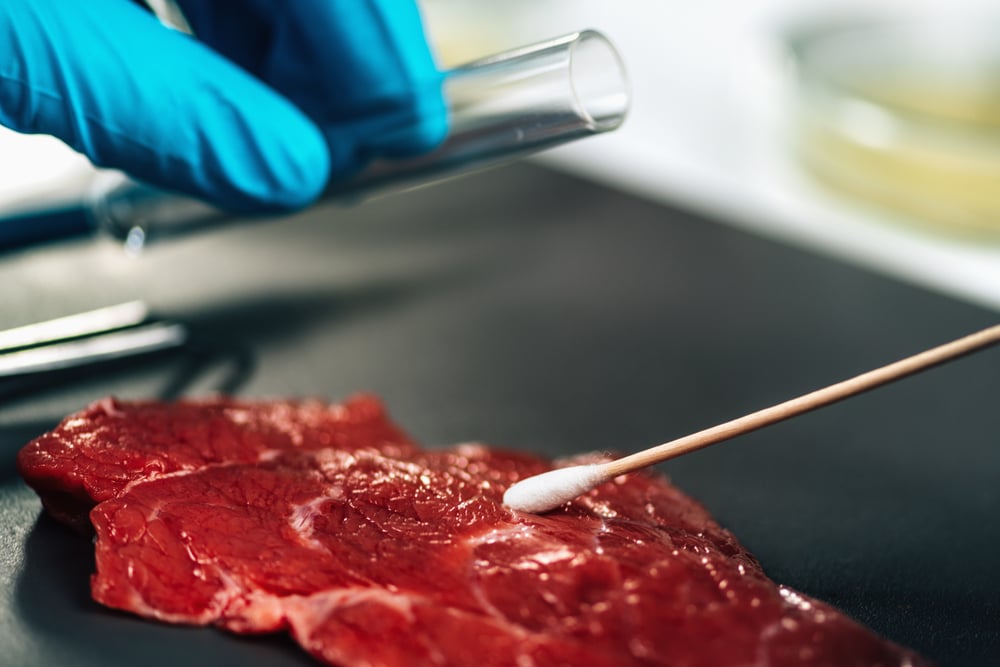Sampling techniques for detecting Salmonella spp and Listeria monocytogenes in food production
When detecting Salmonella spp and Listeria monocytogenes in food production, it is essential to consider the environments in which these pathogens thrive. For example, Salmonella spp tends to exist in dry environments such as flour, bakery products, biscuits, chocolate, herbs, spices, milk powder, and cheese powder. On the other hand, Listeria monocytogenes prefers wet and cold environments and can spread through regular cleaning, especially in refrigerated areas that are cleaned every 8-12 hours. In contrast, dry milk plants may only be wet cleaned once a month or every two months, and dry cleaning is less effective than wet cleaning.
Listeria monocytogenes and Salmonella spp thrive in certain conditions, which include temperature, moisture, pH levels, oxygen levels, and nutrient availability. Both bacteria require nutrients to grow and reproduce, particularly in protein-rich foods. However, there are some differences in the conditions under which Listeria monocytogenes and Salmonella spp thrive. For example, Listeria monocytogenes can grow at refrigeration temperatures, prefers oxygen-rich environments, and has a slightly acidic to neutral pH preference. Salmonella spp, conversely, can grow in a wide range of temperatures, prefers a slightly acidic to neutral pH, and can thrive in both oxygen-rich and oxygen-poor environments. Check out more detailed comparison below.
Listeria monocytogenes:
- Temperature: can grow at refrigeration temperatures (0-7°C / 32-45°F).
- Moisture: moist environments.
- pH level: a slightly acidic to the neutral environment (pH 5.5-8.0).
- Oxygen levels: oxygen-rich environments.
- Nutrient availability: require nutrients to grow and reproduce, particularly in protein-rich foods.
Salmonella spp:
- Temperature: can grow in a wide range of temperatures, from 5°C to 57°C (41°F to 135°F).
- Moisture: moist environments.
- pH level: a slightly acidic to a neutral environment (pH 4.0-7.0).
- Oxygen levels: can thrive in both oxygen-rich and oxygen-poor environments.
- Nutrient availability: require nutrients to grow and reproduce, particularly in foods rich in protein.
Sampling zones for detecting Salmonella spp and Listeria monocytogenes in food production
When checking for Salmonella spp and Listeria monocytogenes in minimally processed factories, you should sample them in similar places. But, again, the focus should be on understanding the risk of cross-contamination of the factory environment and equipment onto the product. According to food safety regulations, the four-zone concept should be used to assess the risk of contamination:
- Zone 1 is the product contact surface, where food directly interacts with equipment and machinery during processing. This zone should have the highest hygiene standard before, during, and after production.
- Zone 2 is the non-product contact surface, including walls, floors, and drains. This area is progressively further away from the food and has a lower risk of contamination.
- Zone 3 is the outside environment outside the processing area and includes loading docks and receiving areas. This zone has a higher prevalence of Salmonella spp and Listeria monocytogenes but a lower risk because it is further away from the product.
- Zone 4 is the personnel zone, including break rooms and restrooms. The risk of contamination here is reduced because organisms do not jump from the floor into the food.
Types of sampling techniques available in a food production environment
Sampling techniques for detecting Salmonella spp and Listeria monocytogenes depend on specific environments where these pathogens thrive and the zones within the production facility. Here are some commonly used sampling techniques:
- Swabbing: Using a sterile swab to collect samples from surfaces or equipment that may be contaminated. Swabs can be used on various surfaces, including food contact surfaces, floors, drains, and walls. The swab is then placed in a sterile transport tube and sent to a laboratory for testing.
- Environmental sampling: This involves collecting samples from various locations in the food production facility, such as drains, air ducts, and processing equipment. Environmental sampling can help identify potential sources of contamination and determine the effectiveness of cleaning and sanitation procedures.
- Product testing: This technique involves collecting finished product samples, such as raw meat or ready-to-eat foods, to test for Salmonella spp or Listeria monocytogenes.
- Random sampling: This approach involves randomly selecting samples from a population of food products or surfaces in the production facility. Random sampling ensures that all areas and products are tested, reducing the risk of missing contamination.
- Pooled sampling involves combining multiple samples into a single sample for testing, as it can detect low contamination levels in large batches of food.
Sampling techniques are tailored to each zone based on the level of risk of contamination
The sampling procedure should include Zone 1, Zone 2, and Zone 3 to minimize contamination risks. For example, in Zone 1, the highest level of hygiene and cleanliness is required as this is where the food comes into direct contact with equipment and machinery. Therefore, sampling techniques in this zone may include swabbing surfaces and equipment and environmental testing of air and water samples.
In Zone 2, which includes non-product contact surfaces, swabbing and environmental testing may also be used. However, because the risk of contamination is lower in this zone, sampling techniques may not need to be as rigorous as in Zone 1.
In Zone 3, which includes the outside environment, the risk of contamination is even lower. Sampling techniques in this zone may include testing of surface swabs and water samples but may not need to be as frequent as in Zones 1 and 2.
Finally, in Zone 4, the personnel zone, sampling techniques may include testing hands, clothing, and personal protective equipment (PPE) worn by workers in the processing area. However, the controlling measures in this zone are more related to hygiene control.
Read also: Rapid Testing Methods For Salmonella Monitoring In Food Production
Overall, sampling techniques in each zone aim to identify potential sources of contamination and assess the risk of contamination of food products. Therefore, sampling techniques must be tailored to each zone to provide accurate and meaningful results.

